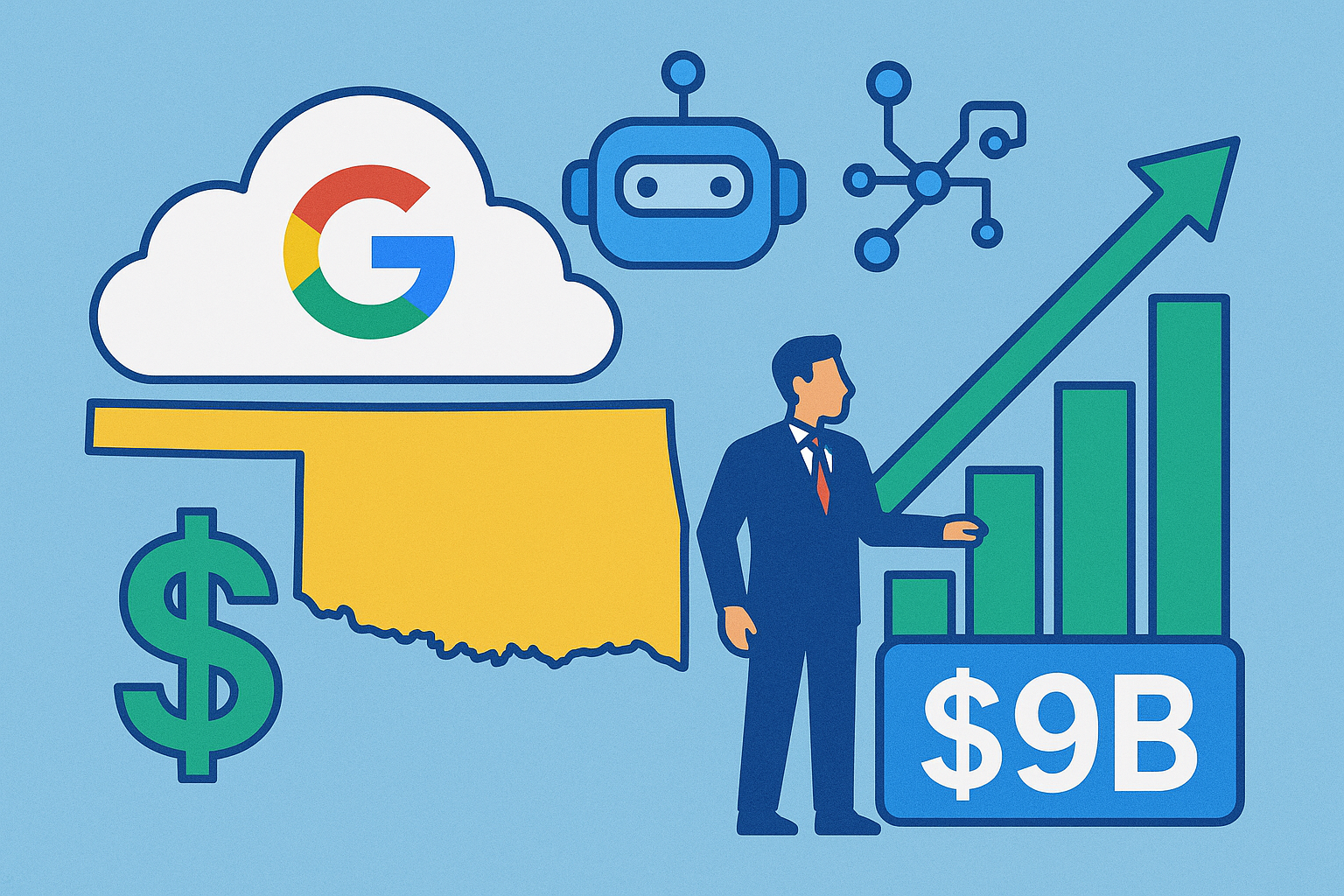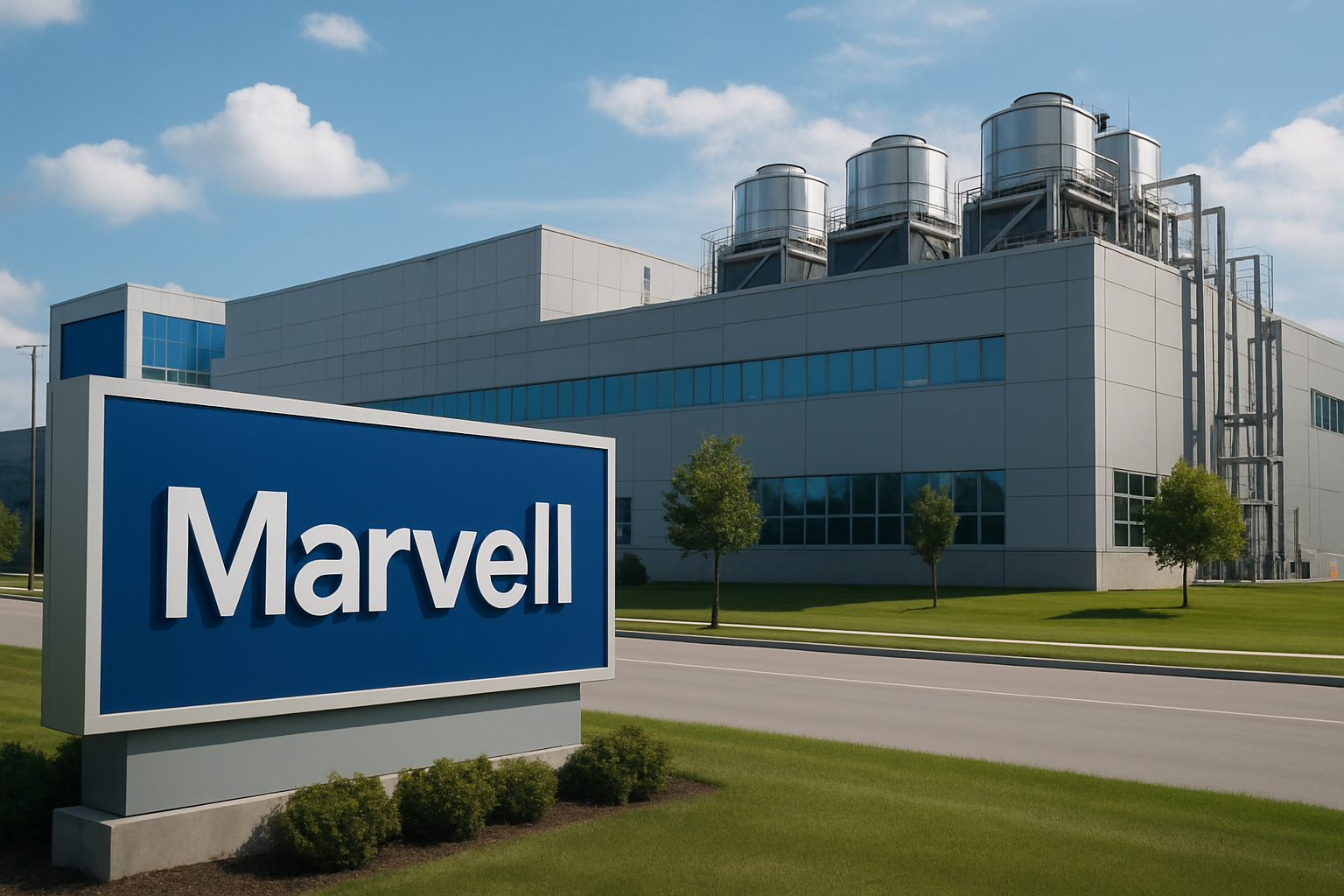The AI and cloud infrastructure race is accelerating, and Google is making its next big move — committing $9 billion over the next two years to expand operations in Oklahoma. The investment, one of the largest regional tech commitments in recent memory, signals both the scale of demand for AI-powered computing and the strategic positioning of the U.S. in a fiercely competitive global market.
Amid growing institutional focus on AI-driven productivity and cloud computing’s central role in digital transformation, this development is sparking discussions among investors about where the next growth wave might hit — and how to position portfolios to ride it.
Why This Matters for Investors
According to KOSU and KGOU reports (Aug. 15, 2025), Google’s plan includes:
- Major Data Center Expansion in Oklahoma to serve AI training and high-performance cloud workloads.
- Workforce Development Initiatives, including training programs in partnership with local universities and technical colleges.
- Economic Revitalization Potential, with job creation likely to benefit both skilled tech workers and supporting industries such as construction, energy, and logistics.
The move reinforces a trend highlighted by McKinsey and Gartner — global cloud infrastructure spending is projected to grow over 18% annually through 2028, with AI-related workloads driving a disproportionate share of demand. This expansion is not just a tech story — it’s a real estate, energy, and local economy story.
The Strategic Significance
Google’s decision to site such a massive investment in Oklahoma aligns with two macro-level strategies:
- Geographic Diversification — Spreading critical infrastructure away from coastal hubs reduces operational risk and takes advantage of lower energy and land costs.
- Regulatory & Incentive Positioning — Oklahoma’s business-friendly policies and incentives for green data centers make it an attractive location for tech infrastructure.
For investors, this highlights the increasing role of secondary and tertiary U.S. markets in capturing the benefits of big-tech infrastructure spending — a pattern we’ve seen with Amazon’s AWS expansion in Virginia and Microsoft’s data center push in Iowa.
Future Trends to Watch
- AI Infrastructure Demand — With generative AI adoption in enterprises forecast to grow 5x by 2030 (PwC), hyperscalers like Google, Microsoft, and Amazon will continue investing heavily in compute capacity.
- Green Energy Integration — Oklahoma’s growing renewable energy sector could become a competitive advantage for data centers seeking carbon neutrality.
- Regional Economic Multipliers — Infrastructure builds of this size often spark a “halo effect,” driving growth in commercial real estate, service sectors, and secondary tech ecosystems.
- AI Talent Pipelines — Google’s academic partnerships could establish Oklahoma as a talent hub, potentially drawing other AI and cloud companies to the region.
Key Investment Insight
Investors should closely monitor:
- Cloud Infrastructure REITs such as Digital Realty ($DLR) and Equinix ($EQIX), which could benefit from broader hyperscaler demand.
- Regional Real Estate & Construction Firms tied to large-scale commercial developments in Oklahoma.
- Energy Providers — both traditional and renewable — serving data center operations.
- Semiconductor & AI Chip Leaders like NVIDIA ($NVDA) and AMD ($AMD), as these facilities require vast AI compute resources.
Google’s investment underscores the symbiotic relationship between AI growth, infrastructure buildouts, and local economies — a pattern likely to repeat across North America as AI adoption accelerates.
Google’s $9 billion bet on Oklahoma is more than an infrastructure story — it’s a signal of where the AI and cloud computing economy is heading. As hyperscalers push into new regions, investors have a front-row seat to a transformation that will ripple across technology, real estate, energy, and labor markets.
For those tracking the intersection of AI, infrastructure, and regional economic development, MoneyNews.Today will continue to monitor the latest market-moving stories, helping investors identify opportunities before they become mainstream headlines.





